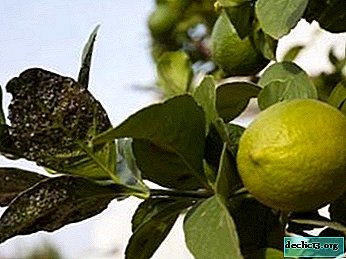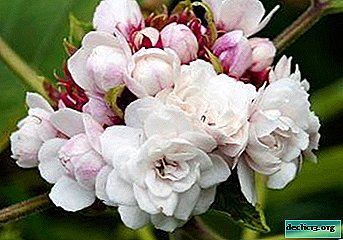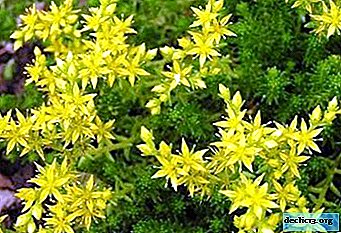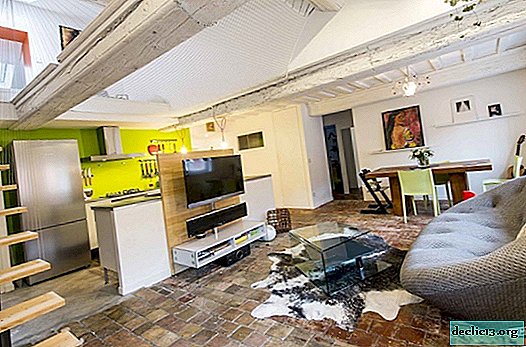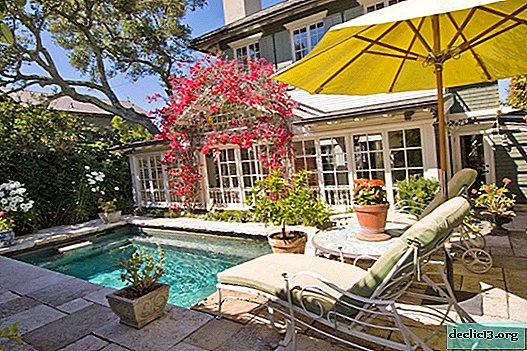Roberta Garden Geranium: growing instruction with photo
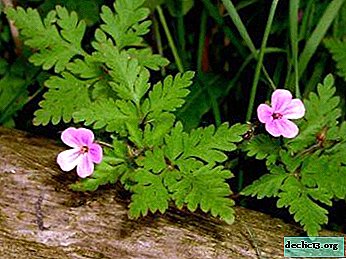
For a long time, flower growers had little interest in garden geraniums (cranes) and preferred their southern relatives to pelargoniums. Despite the fact that pelargoniums are also from the genus geraniums, they are often quite mistakenly called geraniums, these southern plants are completely unsuitable for planting in open ground.
Now geraniums have actively entered into fashion as a decoration of gardens and rose gardens, because they are unpretentious, undemanding and resistant to adverse conditions. Among gardeners, the beauty and unusual shape of geranium leaves, and the delicate colors of flowers are highly valued. Active work is underway on selection, and ever new hybrid varieties appear, with unusual shapes and shades of flowers and leaves.
Description and Origin
Robert Geranium (Geranium Robertianum) refers to annual herbaceous plants. It is an upright shrub with spreading shoots. Its light green stems, straight 20-30 cm high, are covered with a pile of red glandular hairs. Because of the pile, Robert's geranium stalks look light red and fluffy.
Reference! On highly branched stems, numerous openwork leaves with long petioles, similar to fern leaves. The general shape of the leaves is rhomboid, in general they are deeply dissected palmate. Each peduncle has a pair of pale pink flowers. The flowers are small (1.5-2 cm), their wedge-shaped petals are divided.Robert Geranium blooms from May to September, foliage in the fall acquires a bright orange-red color. After flowering, a fruit of an unusual shape is formed, in a ripened and open form similar to a crane head with a beak.
Robert's geranium grows in broad-leaved forests and ravines of Central, Eastern Europe and Russia, preferring moist and shady thickets. It grows on wet stones and rocks of the Caucasus, in the alpine meadows of the Himalayas. Sometimes it grows in the moss-covered cracks of the trunk of old trees.
Photo
Here are photos of this flower:





Lighting and location, soil requirements and propagation
Since Robert’s geranium is a forest resident, she prefers partial shade, moderate temperatures and humidity. For intensive growth and lush, abundant flowering, loose well-drained soil, excluding stagnation of water, is desirable. High humidity along with low temperature can destroy even this resistant plant.
Advice! Robert's geranium, like all geraniums, grows well on slightly acidic and neutral soils. When making soil mixtures and mixing the soil for this species, do not forget to add deciduous compost, peat or bring slightly acidic gray forest land.Robert's geranium is propagated by seeds, bears fruit abundantly and when ripened, the seeds are scattered in different directions, it is rather difficult to collect them. The plant forms a massive self-sowing and annual abundant flowering. It is capable of independently propagating and "spreading" throughout the garden, becoming a real weed. Cold resistance, even frost resistance up to 40 ° C, make Robert's geranium practically "indestructible".
The plant is suitable for mixed flower beds in the shade of trees and for gardens in a natural style. The versatility of Robert's garden geranium is endless: it can be planted in any flower beds, in the natural areas of the garden, in rockeries and on the alpine hill of the garden, among shrubs.
In flower beds, it grows rapidly, and its dense bushes prevent the growth of weeds, excellent groundcover. Looks great with large-leaved plants and as background plants, covering the voids of flower beds.
Landing instruction
Robert's geranium fills the empty shady areas of the garden, so unloved by most plants.
 Has tenacious roots and holds well in sloping areas (rocky rockeries and alpine slides). Seeds collected in August can be planted right away so that the geranium can grow seedlings to frost. But it’s safer to sow seeds before winter in already frozen soil. Then the seeds will germinate only in the spring under favorable and conducive conditions.
Has tenacious roots and holds well in sloping areas (rocky rockeries and alpine slides). Seeds collected in August can be planted right away so that the geranium can grow seedlings to frost. But it’s safer to sow seeds before winter in already frozen soil. Then the seeds will germinate only in the spring under favorable and conducive conditions.
You can sow the seeds in April in still cold soil in the nursery and then plant the formed bush in the flower garden. Quite often, seeds are planted in a pot in March, and then they are dived and planted mature seedlings in their designated place in the flower garden or on an alpine hill.
Instructions for seed germination:
- Prepare a soil mixture (deciduous compost, humus and peat).
- Pour seeds into a box or pot with ready-mixed soil.
- Cover the glass with the top and do not remove until the first leaves appear in the seedlings.
- After the first leaves appear, the glass is removed.
- Sprouts are dived and planted in ditches.
- The grown plants are transplanted into the flower garden.
How to care?
Robert's geraniums are undemanding to the soil, the only important condition is to avoid stagnation of water. In the spring, loosen the earth and make a complex of mineral fertilizers, ash. Further watering as necessary (the first two days after planting and if the leaves fade), pruning wilted shoots once a year (in early spring or at the end of the season). At the end of September, cut off the aerial shoots, mulch with a thick layer of garden compost, wood chips or sawdust. Thoroughly weeding in May until a leaf mass appears.
Note! Cold-resistant geranium cranes require almost no care after planting. Propagate independently by abundant self-seeding. The first shoots appear in early or mid-May, geraniums bloom for a long time (40-45 days) from the second half of June and in August give seeds.Diseases and Pests
Sick garden geranium is extremely rare. The most common of the diseases:
- Powdery Mildew Infection comes from diseased plants, infected soil, or through insect vectors. If individual leaves are affected, it is enough to cut and burn them. With advanced forms, first of all, isolate the diseased plant and treat it with colloidal sulfur in a solution or powder. An effective solution of Bordeaux fluid (0.5%).
- Brown spotting. It manifests itself in fungal diseases (in cold rainy years). Timely removal of weeds and dead plants, as well as good soil drainage - the most effective prevention of fungal infections. It is important not to stagnate the water in the ground. Damaged leaves are removed and burned. Geranium itself should be treated with fungicidal preparations.
Healing properties
 The species of Robert geranium (geranium robertinum) is distinguished by the unpleasant smell of leaves and stems, for which it is popularly called the stinker. A similar smell is manifested due to the presence of bitter essential oils in geraniums and is especially pronounced when rubbing parts of the plant.
The species of Robert geranium (geranium robertinum) is distinguished by the unpleasant smell of leaves and stems, for which it is popularly called the stinker. A similar smell is manifested due to the presence of bitter essential oils in geraniums and is especially pronounced when rubbing parts of the plant.
But thanks to the special substances contained inside, including these odorous essential oils, Robert Geranium has pronounced anti-inflammatory and hemostatic healing properties. In pharmacies, the preparations of this plant are presented: Robert Geranium herb (herba gerani robertiani) and Robert Geranium root (radix gerani robertiani).
The infusion of Robert Geranium herb has the following properties:
- Antiseptic, anti-inflammatory effect. Why regular compresses are needed.
- Hemostatic, astringent.
- Analgesic effect for rheumatism and bone fusion.
- Used for diarrhea, dysentery.
- It can dissolve salt deposits in kidney stones.
Robert's geranium will look great in your garden in container landings (at least 0.8-1.0 m deep), to decorate rockeries and alpine hills (against gravel and pebbles), in mixed flower beds (mixborders). Its shade tolerance and unpretentiousness will help fill in all the problematic shaded areas.
Such wonderful decorative qualities as the unusual light red color of the stem, delicate fern leaves and delicate colors of small flowers on long stems give the garden airiness and grace. Use the healing properties of geraniums when creating a pharmacy corner in your garden.







